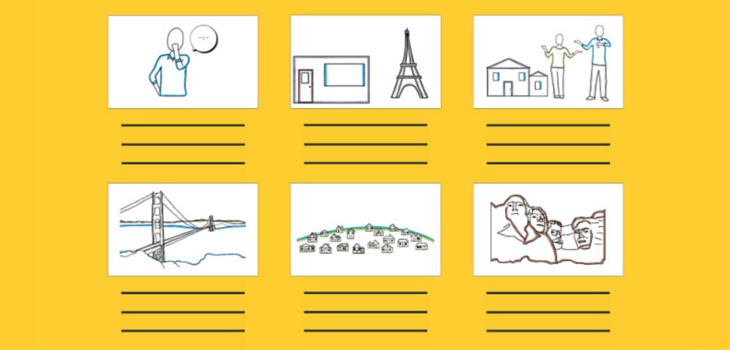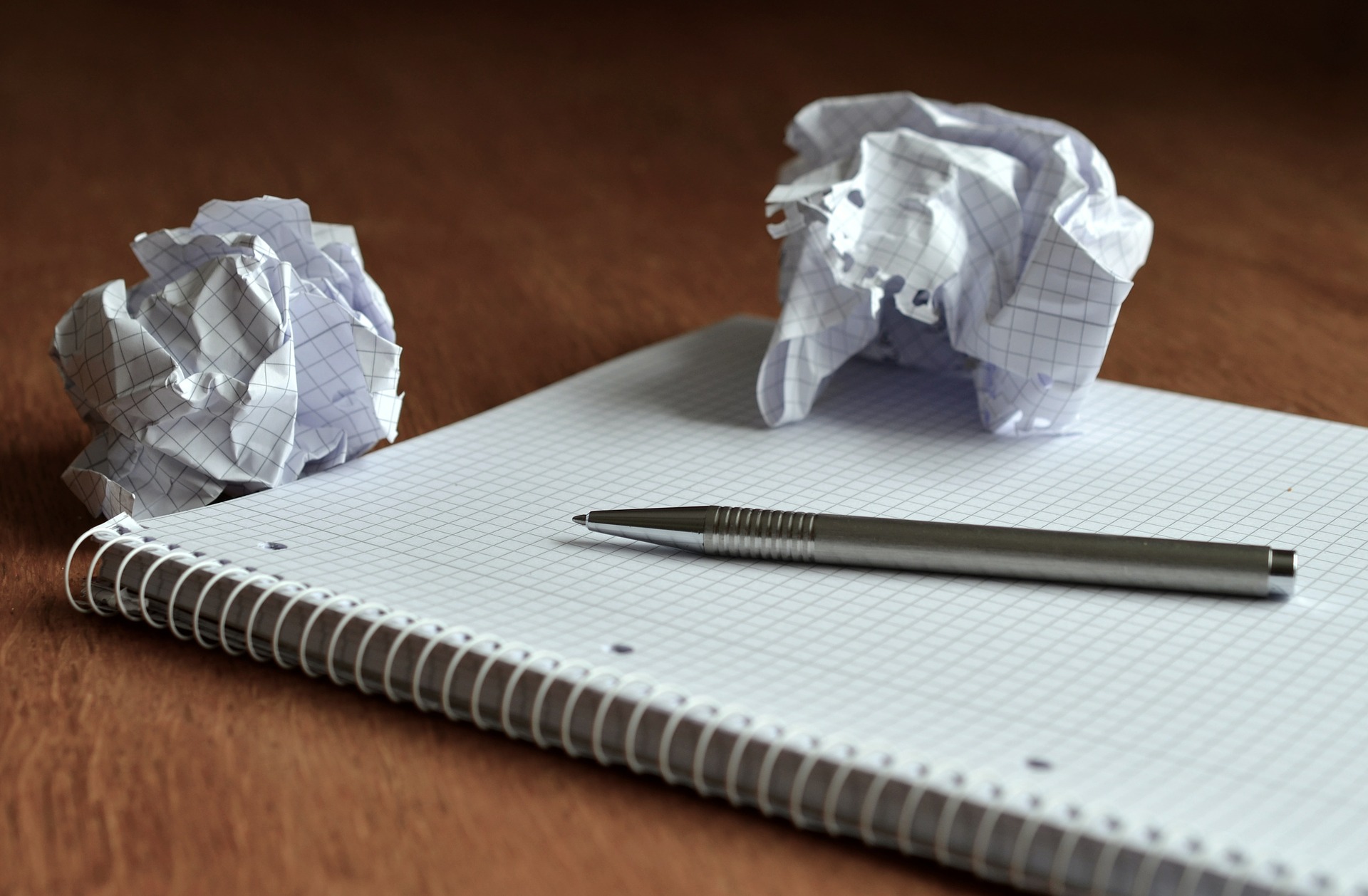“It seems to me that the less I fight my fear, the less it fights back. If I can relax, fear relaxes, too.” Tweet this quote from Elizabeth Gilbert’s book Big Magic
For a writer, there’s nothing worse than having your brain freeze in a state of panic at a looming deadline. In her TED talk, Elizabeth Gilbert talked about the anxiety that comes with being a writer and how people tend to generally respond with questions such as, “Aren’t you afraid you’re never going to have any success? Aren’t you afraid that you’re going to work your whole life at this craft and nothing’s ever going to come of it and you’re going to die on a scrap heap of broken dreams with your mouth filled with bitter ash of failure?”
She asks, “And what is it specifically about creative ventures that seems to make us really nervous about each other’s mental health in a way that other careers kind of don’t do, you know? Like my dad, for example, was a chemical engineer and I don’t recall once in his 40 years of chemical engineering anybody asking him if he was afraid to be a chemical engineer, you know? “That chemical-engineering block, John, how’s it going?”
From my position as both an engineer and a writer, I can tell you, blocks can appear in engineering, especially when you’re working in research and you’re expected to come up with something new and innovative. However, most of the time, when you’re applying your engineering knowledge in a company that is not IDEO or Google, you’re mainly doing something that’s been done before, and you might suffer from complete boredom, but definitely not an engineering block.
However, since this article is about writer’s block, how do we deal with it, as creative writers, bloggers, even engineers (since engineers do suffer a lot from writer’s block especially when they need to write a report or a paper)? How do we stop knocking our head against the table and actually get something written down;
1) Freewrite for fifteen minutes. Don’t be intimidated by the white page. The main culprit behind our writer’s block is the self-editing critic inside our heads. He’s responsible for putting the brakes on our projects before they start by asking questions like;
-Is it good enough?
-Will people like it?
-Will it be published?
So freewriting is supposed to liberate us from the shackles of this critic. A dose of freewriting is prescribed daily for creative writers -typically called the Morning Pages – by Julia Cameron in her book, An Artist’s Way. According to her, the Morning Pages are three pages of longhand, stream of consciousness writing, done first thing in the morning.
A website called http://750words.com/ took that idea and provided a private online diary for people to freewrite in. It provides users with metadata such as typing speeds, number of distractions, word analysis of feelings and themes.
Whether you do it by hand or on your computer, the main rules of freewriting are two;
1. Write nonstop for fifteen minutes.
2. Do not edit as you write. That means, do not check your grammar or vocabulary, and keep moving forward without going backwards.
Freewriting is quite liberating and might work for the engineers among us as well. As an engineer, you might be tempted to think of it as a waste of time. However, if you’ve already been staring at that white page for an hour, what’s the harm in spending fifteen minutes freewriting about the theme of your article?
2) Start with the figures, and work backwards. The main reason why engineers find problems with words is because they’re words. I mean, if you’re an engineer then chances are you’ve entered it for a reason that has nothing to do with a love for words. So if you’re working on an engineering report or paper, the first step is to put in the figures (and just for psychological reasons, expand them so each figure takes half a page). Then write the analysis of the figure in terms of what you see and why you see it. The next logical question to answer is, “Where did the figure come from?” That’s when you move on to describe the methodology section. Finally, you can add in the introduction, conclusion and abstract. The main point is, don’t start with words.
3) Use mindmapping. This is a versatile technique that can work for brainstorming in any field. We start by putting the central theme in the middle of the paper, and then branching out from there by linking words, ideas and tasks. If applied to creative writing projects, the branches can summarize things like characters, settings, plot lines. If used for engineering reports, the branches can help outline a paper, or help interpret a result, “What are the possible causes for this result? What is the weakness with this argument?”
Mindmapping helps organize ideas, as connected ideas would cluster around a single branch. It’s an open-ended technique that helps expand your thinking in that area. When we’re working on a mind map, the white space on the page becomes more fun than intimidating as it challenges us to fill it with doodles, branches and endless possibilities.
4) Doodling. We all know what that is, because at one point or another, we’ve actually been discouraged from doing it in class, and told instead to pay attention. However, according to The Doodle Revolution, doodling turns out to be a simple visual tool that allows creative thinking and has been used by giants such as Edison and Einstein. So next time someone tells you to stop doodling in class and pay attention, you can cheekily tell them, “I’m just following in the footsteps of Einstein.”
5) Storyboard. This is a visual method I learned from my friend who studied Mass Communication in AUS. Before shooting a movie, they had to submit a storyboard to the professor where they depicted what happened in each scene along with the dialogue. According to GoAnimate website; It’s made up of a number of squares with illustrations or pictures representing each shot, with notes about what’s going on in the scene and what’s being said in the script during that shot. Think of it as sort of a comic book version of your script and looks something like this.

I enjoy Storyboarding while writing stories. Besides being a stationary geek who likes to make the best use of her Post-it notes, it gives me an easy way to toggle between the big picture of the story arch and the details of each scene. It also helps me with the flow of the story, and wake up to any discontinuity between two scenes. And if you can’t sketch, you can keep everything in words, giving details for each scene in terms of settings, characters, dialogue…etc.
I personally don’t see an application of this in engineering reports as those tend to be dry. However, if you think of one, let me know…
6)Writing session with a friend. Sometimes we get stuck because we’re so engrossed in our own stories (and dry reports) that we fail to see how we can move forward. That’s why it helps to bounce ideas off a friend in order to get a different perspective. After talking it out, you can attend a writing session alongside that friend where you’re both working on your individual writing projects in a coffee shop. The sound of someone else typing fast could inspire you to continue typing, even if all you type is, “hao;sdfuiuabkas dfyiha soiej alksmdfasd .”
7) Switch off the internet. The impracticality of this could come from the fact that half the research used for writing requires the internet. However, you can separate the research sessions from writing sessions so you can do the latter without the internet. Otherwise, you’d just need to develop enough discipline to use the internet only for research and not get caught up in the Infinite Youtube Spiral.
So have you ever applied any of these methods to overcome writer’s block? Which method is your favorite? Leave a comment below or tweet me @ahechoes with the hashtag #writersblock.
Like this article? Share it with your friends on facebook and Like the Facebook page.
Header image via pixabay.com
